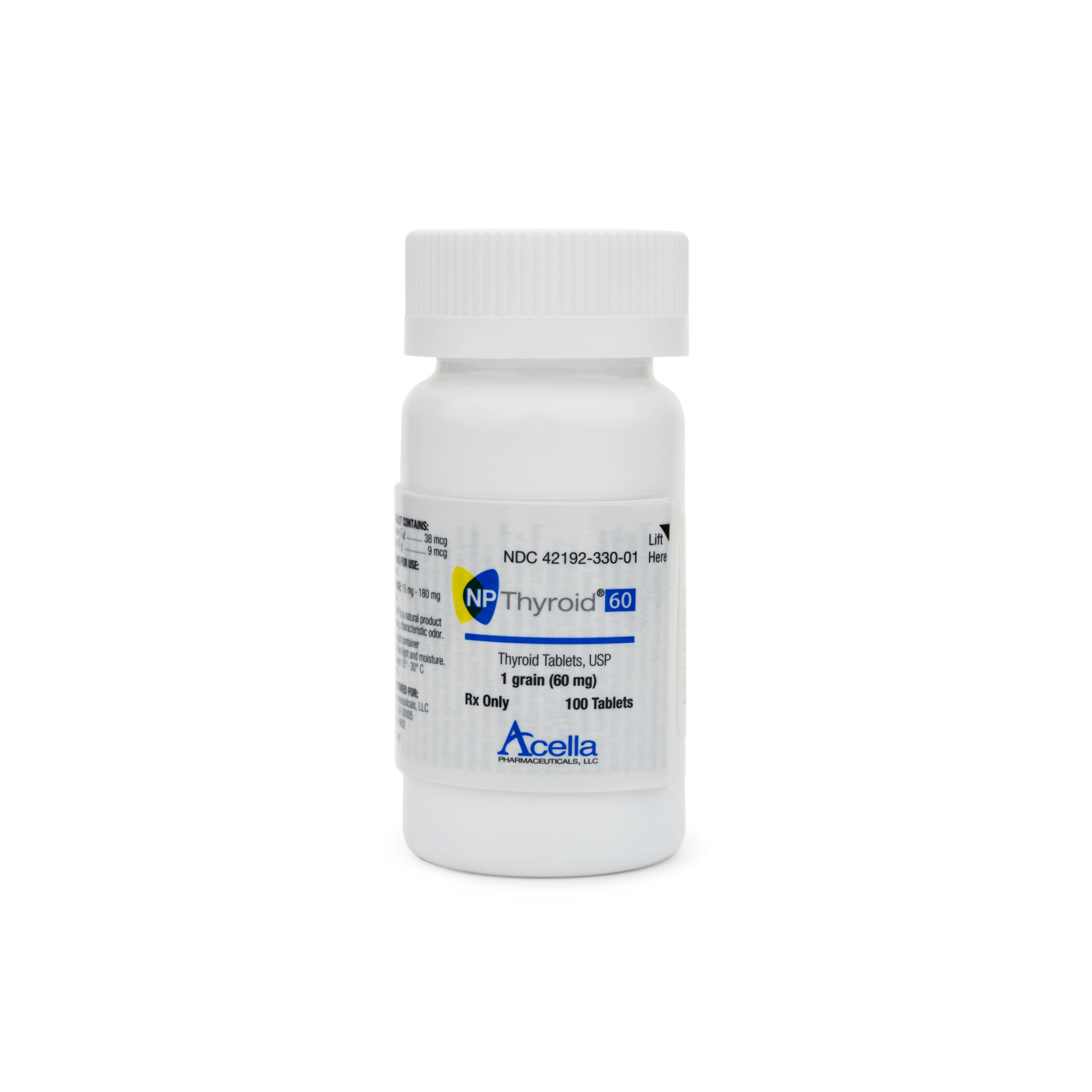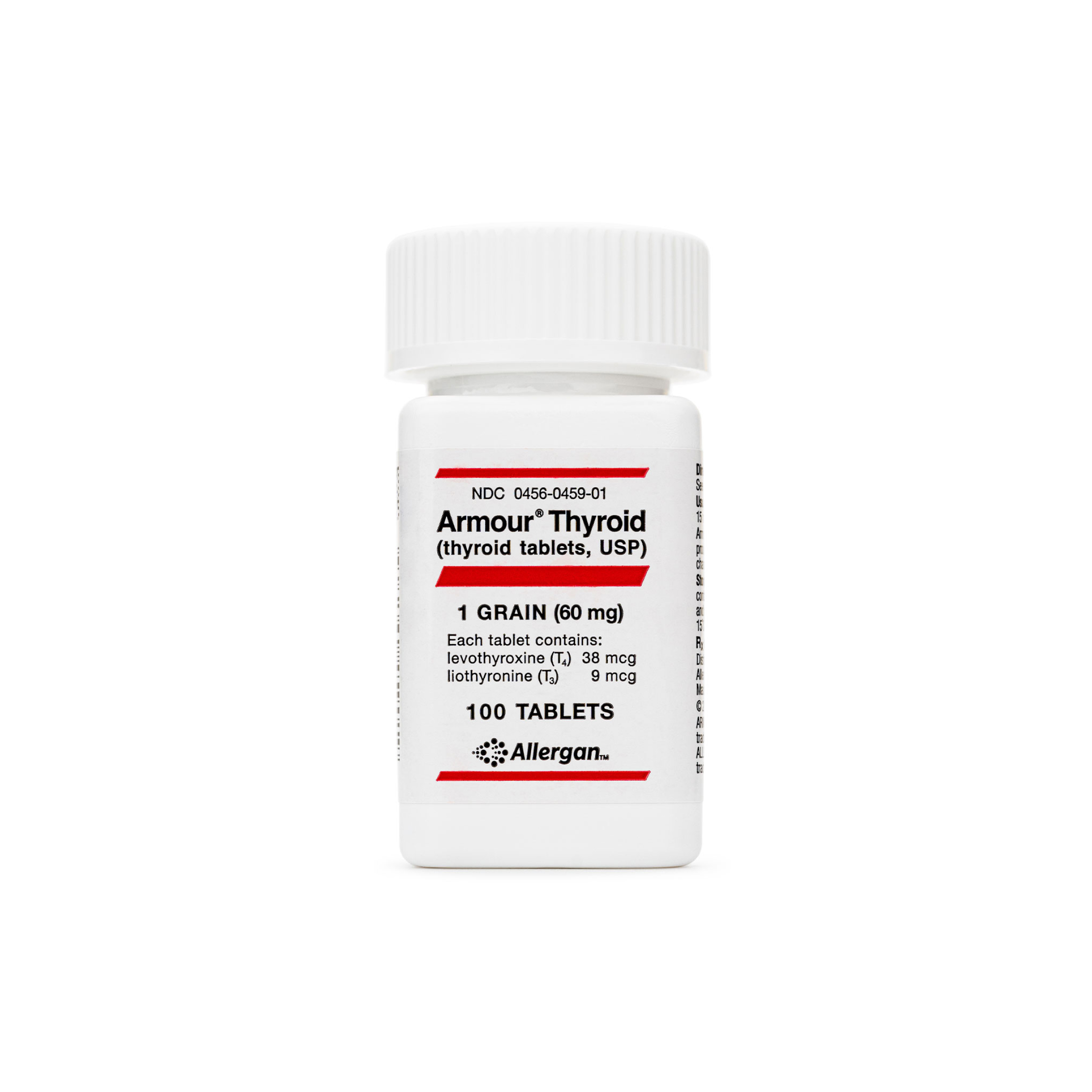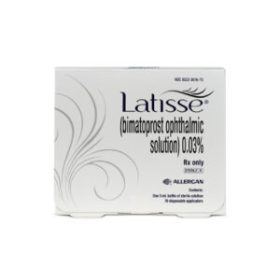Thyroid Tablet (Each) †
† commercial product
Unlike most other hormones that act on specific organs, thyroid hormones affect nearly every system in the body. Some of their key roles include:
Cardiovascular system:
Thyroid hormones increase the number of beta-receptors in the heart, which strengthens heart contractions and raises heart rate. They also help relax blood vessels, lower peripheral resistance, and activate the renin-angiotensin-aldosterone system, which boosts blood volume by increasing fluid reabsorption.
Respiratory system:
T3 supports oxygen delivery by stimulating the production of red blood cells and hemoglobin. It also enhances the absorption of vital nutrients like folate and vitamin B12. In times of higher energy use, thyroid hormones increase breathing rate and ventilation to maintain healthy oxygen levels.
Metabolism:
Higher levels raise metabolism and thermogenesis, which explains symptoms like excessive sweating in hyperthyroidism. Thyroid hormones also play a role in breaking down carbohydrates, building proteins, and regulating fat metabolism.
Nervous system:
Importantly, during brain development, it supports neuron growth and myelin formation, both essential for proper nerve signaling.
Skeletal system:
During pregnancy, T3 supports fetal bone development. In children, it drives bone growth, ossification, and maturation of growth centers. A deficiency during childhood can cause stunted growth that may not fully recover, even with treatment later on.
Reproductive system:
Because thyroid hormones have such widespread effects, maintaining their levels within the normal range is crucial. Typically, healthy T3 levels fall between 100–200 ng/dL, varying slightly with age and gender. When levels drop too low, a condition called hypothyroidism occurs, often requiring oral thyroid supplements to restore balance and prevent disruptions across multiple body systems.
It starts when the hypothalamus (specifically the paraventricular nucleus) releases a small peptide called Thyrotropin-Releasing Hormone (TRH). TRH travels through a special network of blood vessels, the portal capillary plexus, to reach the anterior pituitary gland.
Here, TRH stimulates thyrotroph cells to produce and release Thyroid Stimulating Hormone (TSH).
Type II deiodinase is mainly present in the brain and adipose tissue, ensuring that these organs always have enough active T3 available for their critical functions.
Once released, thyroid hormones work by binding to specific receptors inside cells, called thyroid receptors (TRs). There are two main types:
TR-alpha, found mostly in the heart, brain, skeletal muscles, and bones.
This hormone-receptor complex then triggers changes at the genetic level—activating transcription, producing messenger RNA, and ultimately leading to the synthesis of proteins that carry out the hormone’s effects. These are called the genomic actions of thyroid hormones.
But thyroid hormones don’t only act through genes. In this pathway, thyroid hormones interact with a receptor called Avb3 on the cell membrane. This activates a signaling cascade, particularly the MAP kinase (ERK1/2) pathway, which influences cell growth, proliferation, and ion transport.
Together, these genomic and non-genomic pathways explain why thyroid hormones are so vital—they affect everything from metabolism and energy use to growth, brain function, and heart health.
Before starting thyroid hormone replacement therapy, several important factors need to be considered. In some cases, treatment is absolutely contraindicated, while in others, it can be given but requires careful monitoring. These factors include:
1. Hypersensitivity:
Individuals who are allergic to thyroid hormones themselves or to other ingredients in the formulation should not receive the therapy, as it may trigger adverse reactions.
2. Adrenal insufficiency:
Giving thyroid hormones to someone with untreated adrenal insufficiency can precipitate an acute adrenal crisis, which is potentially life-threatening. For this reason, adrenal function should always be checked and treated first, if needed.
3. Cardiovascular disease:
Because thyroid hormones stimulate the heart, caution is needed when treating people with heart conditions such as angina, arrhythmias, or a history of heart attack. Therapy should be started at low doses and closely monitored.
4. Diabetes:
Thyroid hormones can affect how the body handles glucose, which may disturb blood sugar control. Diabetic patients may require adjustments in their medications when starting thyroid therapy.
5. Renal disease:
Since thyroid hormones are largely eliminated through the kidneys, impaired kidney function can increase the risk of hormone buildup and toxicity. Dosing adjustments and close monitoring are recommended in such cases.
6. Gastrointestinal disorders:
Conditions such as celiac disease or Helicobacter pylori infection can interfere with intestinal absorption of oral thyroid medications, reducing their effectiveness. These conditions may need to be treated or managed for proper hormone absorption.
Thyroid hormone replacement therapy is usually well tolerated by most individuals.
Nausea
Diarrhea
Fatigue
Flushing
Irritability
Atrial fibrillation (irregular heartbeat)
Seizures
Cardiac arrest
Thyrotoxicosis (dangerously high thyroid hormone levels)
While mild effects often resolve with dose adjustment or monitoring, the more severe reactions require immediate medical attention.
In fact, if a pregnant woman needs thyroid hormone treatment because of low thyroid function, it’s important to take it—since untreated hypothyroidism can pose a greater risk to both the mother and the baby.
Thyroid hormones from medication can pass into breast milk, but studies haven’t found any harmful effects on nursing babies. So, it’s generally considered safe for breastfeeding mothers to continue their thyroid treatment.
Store this medication at 68°F to 77°F (20°C to 25°C) and away from heat, moisture and light. Keep all medicine out of the reach of children. Throw away any unused medicine after the beyond use date. Do not flush unused medications or pour down a sink or drain.
- Armstrong, M., Asuka, E., Fingeret, A., “Physiology, Thyroid Function”, StatPearls. Treasure Island (FL). Available: https://www.ncbi.nlm.nih.gov/books/NBK537039/– LinkOpens in New Tab
- Shahid, M.A., Ashraf, M.A., Sharma, S., “Physiology, Thyroid Hormone”, “, StatPearls. Treasure Island (FL). Available: https://www.ncbi.nlm.nih.gov/books/NBK500006/– LinkOpens in New Tab
- Williams, G.R., “Thyroid Hormone Actions in Cartilage and Bone”, European Thyroid Journal, vol.2 issue 1, pp. 3-13. 2012. Available: https://www.ncbi.nlm.nih.gov/pmc/articles/PMC3821494/– LinkOpens in New Tab
- Basile, L.,M., “What are T3, T4, and TSH?”, Endocrine Web. Available: https://www.healthcentral.com/condition/thyroid/thyroid-what-are-t3-t4-tsh?legacy=ew– LinkOpens in New Tab
- Mohan, S., Kim, H., “Role and Mechanisms of Action of Thyroid Hormone on the Skeletal Development”, Bone Research, vol.1, pp. 146 – 161. Available: https://www.nature.com/articles/boneres201311– LinkOpens in New Tab
- Yen, P.,M., “Physiological and Molecular Basis of Thyroid Hormone Action”, Physiological Reviews, vol.81 issue 3, pp. 1097 – 1142. 2001. Available: https://journals.physiology.org/doi/full/10.1152/physrev.2001.81.3.1097– LinkOpens in New Tab
- Brent, G.,A., “Mechanisms of thyroid hormone action”, Journal of Clinical Investigation, vol.122, issue 9, pp. 3035-3043. 2012. Available: https://www.ncbi.nlm.nih.gov/pmc/articles/PMC3433956/– LinkOpens in New Tab
- ”Levothyroxine”, Drug Bank. Available: https://go.drugbank.com/drugs/DB00451– LinkOpens in New Tab
- Colucci, P., Yue, S.C., Ducharme, M., Benvenga, S., “A Review of the Pharmacokinetics of Levothyroxine for the Treatment of Hypothyroidism”, European Endocrinology, vol.9 issue 1, pp. 40-47. 2013. Available: https://www.ncbi.nlm.nih.gov/pmc/articles/PMC6193522/– LinkOpens in New Tab
- Jonklaas, J., Bianco, A.C., Bauer, A.J., Burman, K.D., Cappola, A.R., Celi, F.S., Cooper, D.S., Kim, B.W., Peeters, R.P., Rosenthal, M.S., Sawka, A.M.,” Guidelines for the Treatment of Hypothyroidism: Prepared by the American Thyroid Association Task Force on Thyroid Hormone Replacement”, Thyroid : official journal of the American Thyroid Association vol. 24, issue 12. Pp. 1670-751. 2014. Available: https://www.ncbi.nlm.nih.gov/pmc/articles/PMC4267409/– LinkOpens in New Tab
- Hueston, W.J., “Treatment of Hypothyroidism”, American Family Physician, vol.64 issue 10, pp.1717-1725. 2001. Available: https://www.aafp.org/afp/2001/1115/p1717.html– LinkOpens in New Tab
- ”Levothyroxine sodium – Drug Summary”, Prescribers Digital Reference. Available: https://www.pdr.net/drug-summary/Levothyroxine-Sodium-Injection-levothyroxine-sodium-3865– LinkOpens in New Tab
- ”Levothyroxine Pregnancy and Breastfeeding Warnings”. Available: https://www.drugs.com/pregnancy/levothyroxine.html






